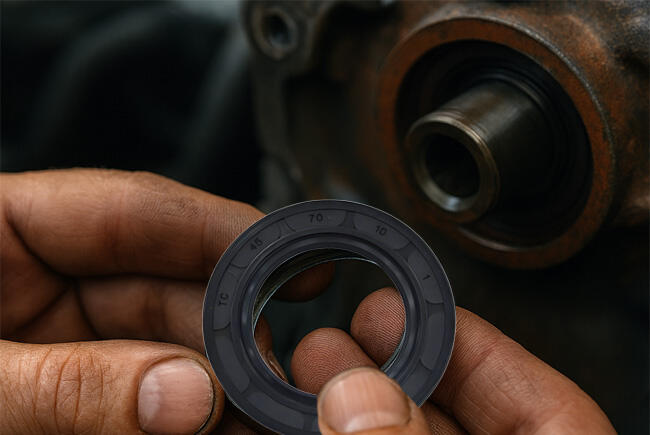When dismantling an engine, the camshaft seal is hardly the most eye-catching component — small in size, tucked away in a spot most people don’t think about. Yet anyone who’s spent time in the trade knows that its condition reveals a surprising amount about the engine’s overall “temper.”
Long idling in high heat, frequent cold starts, or sudden stops after highway runs cause metal and rubber to expand and contract at mismatched rhythms, and the oil film along the sealing lip begins to fluctuate. Seasoned mechanics often remove the seal and first check for a faint polished ring along the contact surface. Then, using the pad of a fingertip, they trace the lip in a slow circle — if the friction feels noticeably dry, it usually signals minor journal wear or unstable lubrication. This “old-school” method still earns trust at the bench.
When sourcing replacements, beginners tend to match only the dimensions stamped on the part, overlooking the seal’s compound and lip profile. In practice, fluoroelastomers handle high heat and chemical exposure more reliably, but they can stiffen in prolonged low-temperature conditions. Acrylic rubber, on the other hand, resists cold-weather hardening but requires more regular oil film checks to prevent dry running. Experienced buyers factor in the vehicle’s duty cycle, climate zone, and even the operator’s habits before shortlisting materials that will last.
Installation is just as critical as selection. Skilled technicians will clean the journal surface with a lint-free cloth, apply a paper-thin layer of specialty grease to the lip, and avoid scoring the sealing edge during fitment. Some prefer to press the seal in gradually, rotating it slightly while seating to let the lip settle naturally instead of forcing it square all at once. Manuals rarely stress these details, but in the real world, they often decide whether a seal survives or fails early.

In one early-leak case I investigated, a seal began weeping before hitting the 5,000 km mark. Post-mortem inspection revealed the press-fit depth was off by less than one millimeter, leaving the lip’s contact zone too shallow to maintain a stable oil film. Such a small deviation is easy to miss, yet with a caliper and a bit of patience, it’s preventable.
For machines operating in dusty or muddy environments, the outer dust lip deserves equal respect. Once worn, fine particles creep along the shaft into the lubrication zone, accelerating lip wear. My habit during scheduled service is to clean the dust barrier area and, depending on the conditions, consider adding a labyrinth seal or retaining ring to significantly extend the service life.
Camshaft seal is performance is shaped not only by the factory’s quality control but also by the installer’s touch, the conditions it runs under, and how carefully it’s maintained. The data tells part of the story, but connecting it with real-world fieldcraft is what turns numbers into reliable results.
 Hot News
Hot News